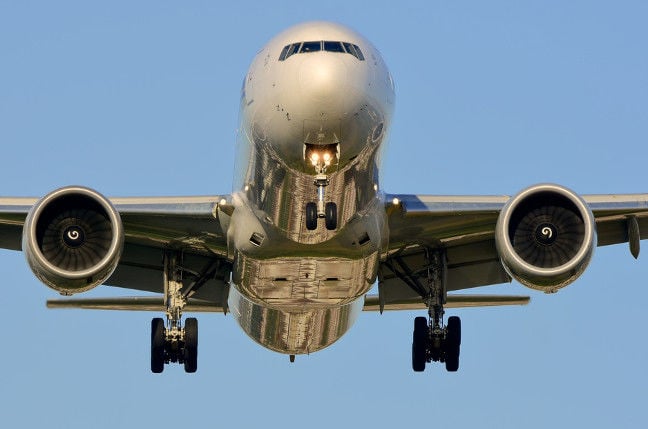The UK’s Civil Aviation Authority (CAA) has said 5G mobile phone emissions will not harm airliners, dampening excitement in the US over mobile masts interfering with airliner altimeters.
In December, the FAA issued a warning about 5G C-band frequencies used by cell phones, saying the 3.7-3.98GHz band used by cell phone towers Conflict with airliner radio altimeter.
The timely warning, telling airlines to pay attention to the problem, followed by two prominent U.S. mobile network operators delaying the rollout of C-band.
Radio altimeters (radalts for short) calculate the altitude of an aircraft directly below it. Traditional pressure altimeters give readings related to the pressure setting chosen by the pilot, usually related to altitude above mean sea level. The radar feeds into various systems, including the Ground Proximity Warning System (GPWS; it yells “pull up!” when an airliner gets too low) and similar safety systems, including automatic landing in bad weather.
However, in the weeks before the delay, the Civil Aviation Authority said there was nothing to worry about.in a Security Notice Released on December 23, the regulator told pilots: “With other [national aviation authorities] No confirmed instances of 5G interference causing aircraft system failures or unexpected behavior have been identified,” while cautiously adding: “Past performance is no guarantee of future applications. “
as we previously reported, the U.S. concerns focus on an October 2020 report by the Aeronautical Radio Technical Committee. Its analysts ran simulations of transmissions from the 5G band to the radio altimeter band and correlated it with potential mobile mast locations below the airport approach path.
Radio altimeters operate between 4.2GHz and 4.4GHz, according to a Promotion meeting [PDF] Submitted to the International Civil Aviation Organization in 2018, summarizing the risks to radalts at the time, which did not include cell phone spectrum. This is several hundred megahertz away from the radio altimeter band. So what’s going on here?

Qualcomm slideshow showing global 5G spectrum allocation in December 2020. Click to enlarge.The full PDF presentation is here.
Civil Aviation Authority spokesman Ollie Turner told register In a prepared statement: “There are no reports that aircraft systems in UK airspace have been affected by 5G transmissions, but we are still working with Ofcom and the Ministry of Defence to ensure that the deployment of 5G in the UK does not cause any technical issues with aircraft. “
Similarly, the European Union Aviation Safety Agency (EASA) Notice of Rejection of the Canadian Radio Altimeter Directive Similar to the FAA’s 5G warning: “EASA cannot determine whether an unsafe condition exists, but will continue to coordinate closely with affected design approval holders before deciding whether enforcement action is warranted.”
Regulators on this side of the Atlantic do not appear to be concerned about the gap between Europe-wide 3.4-3.8GHz 5G spectrum allocations and the 4.2-4.4GHz radalt band. The reason for the caution of the FAA (and the US pilot union ALPA) appears to be a concern that mobile network traffic from the top edge of 3.98GHz will flow into adjacent bands.
The FAA also said 5G power levels in the U.S. are significantly higher than elsewhere.Body point out In the U.S., “even the planned temporary nationwide reduction in power levels would be 2.5 times higher than in France” (1585 watts versus 631 watts).
Point ‘n’ zap
Gartner analyst Bill Ray, who worked for the parish, told register The difference in power levels is part of the problem, the other is that no one knows how good a radio altimeter’s RF filter is.
“If you’re in the U.S. military and you overdesignate (and overspend) on everything, you’re probably going to be fine,” he said, noting that Ladar could also be installed on private light aircraft — which are more vulnerable than light aircraft. Stricter maintenance rules for commercial airliners.
“The problem is, no one has done a thorough study of how good the filter on the altimeter is, so no one knows how bad the problem will be.” On top of that, there are potential problems with directional 5G (or any cell phone, actually) signal .
“MIMO uses beamforming to direct the radio signal to the receiving phone, so theoretically the signal shouldn’t be directed to the plane, unless a lot of people forget to turn off their phones while flying, so we have to assume that 5G radio beams will (at some point) be directed towards a A plane about to land,” Ray said.
In fact, it’s one of the reasons airline passengers are told to turn off their phones during takeoffs and landings.
In practice, radio altimeter failures can range between inconvenient and very troublesome.An A320 pilot consulted register Tell us that, according to the aircraft manual, a failure at a later stage close to landing could result in “an untimely FLARE and THR”[UST] Idle mode engagement,” he described as potentially catastrophic in bad weather – but not difficult to deal with if the airliner’s crew can see the ground.
“My opinion? No one knows for sure, everyone is using fancy words to cover it up,” our docile pilot shrugged. Maybe he has a point. ®



